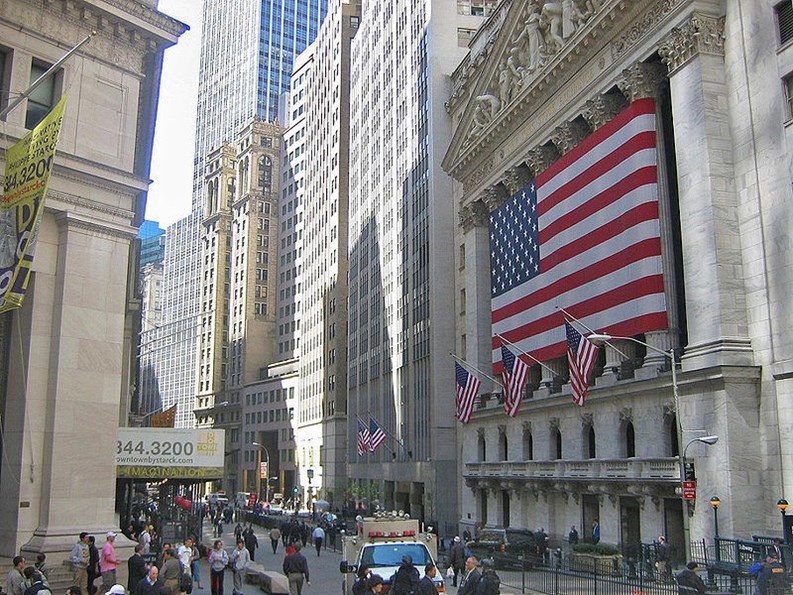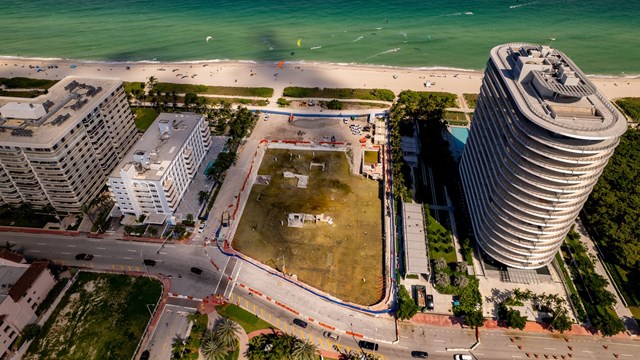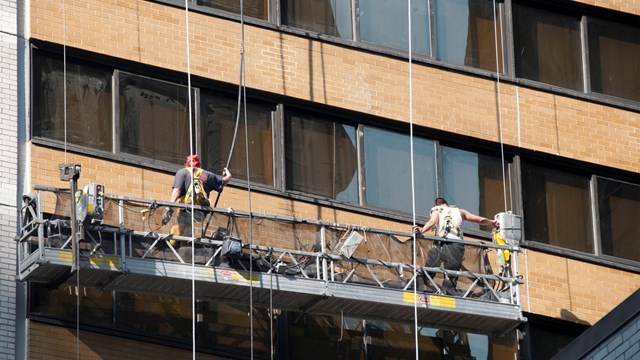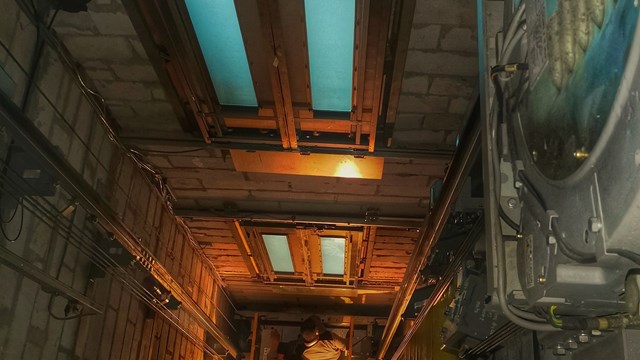Occupying the southernmost tip of Manhattan, New York City’s Financial District is the center of wealth and power for both the city and the nation, but until just a few years ago, the area was a ghost town after office hours. That began to change with the beginning of the housing boom however, and since 2001—despite the devastation wrought by 9/11—the neighborhood has more than doubled its residential population. According to a recent survey conducted by PKS Research for the Alliance for Downtown New York, the Financial District is now home to some 55,000 people.
From Colony to Capitalism
The Financial District encompasses the area south of City Hall Park, excluding Battery Park and Battery Park City. The nerve center of the Financial District is considered to be the corner of Wall and Broad streets, both of which are contained entirely in the district. The neighborhood was the landing site of the first Dutch expeditions to the New World, where a group was stranded in 1613-1614. The first Dutch colony was established shortly thereafter in what is now Lower Manhattan.
“Wall Street was the boundary of the village,” says Leena Akhtar, director of exhibits and archives for the Museum of American Finance, located in Lower Manhattan. “They built the actual wall to keep the cattle in.”
The area was associated with commerce from the start, with the financial markets exerting a profound effect on the overall history of the nation. The Museum of American Finance is located in three floors of 48 Wall Street and includes a main exhibit located in the former banking hall of the Bank of New York. Founded in 1988, partly in response to the 1987 market crash, the museum’s setting grandly illustrates the importance of the financial industry to America’s development.
“We’re here to help people to better their own financial lives,” says Kristin Aguilera, the museum’s communications director. “We have exhibits on money, banking and financial markets. All of our exhibits are interactive and media-rich. It’s much like the action of a trading floor—like the activity of Wall Street itself.”
Rising Demographic
The banks and brokerages of Wall Street are also the engines that have powered the residential development of the area. While the majority of Lower Manhattan residents are upper income, that extra income hasn’t made these people quick to leave the close confines of the city. In fact, many stay in the neighborhood because of the quality of life—part of which is proximity to cultural destinations and part of which is a short commute to work. Compared to a 38-minute commuting time for the average New York resident, Lower Manhattan residents spend just 22 minutes getting to work. Many of them often simply walk to the office, says James Volles, spokesperson for the Alliance for Downtown New York.
The cultural life of the area is led, in part, by the Lower Manhattan Cultural Council. The 35-year-old nonprofit group promotes cultural events and the arts city-wide through advocacy, cultural development programs, and grants. Providing such forums as open studios to site-specific dance performances, the group’s programs are helping to develop the artistic tempo of Lower Manhattan while also providing free public art exhibitions and events to residents and visitors in the city. LMCC has been a large part of developing the area for artists, through converting vacant real estate and unused office space into artist studios, rehearsal spaces and other areas for creative use.
“In September 2009, LMCC transformed an entire city block of unused real estate temporarily donated by Trinity Real Estate into a free and open to the public contemporary art space which currently hosts our spring LentSpace exhibition ‘Avenue of the Americas,’ ” says Diego Segalini, vice president of LMCC. “Many of our initiatives give artists space in which to explore their creativity and develop projects later enjoyed by the public through open viewings, performances, presentations and events.”
During the past two years LMCC began two large initiatives, launching in the fall of 2009 the new contemporary art space downtown named LentSpace. In March, LMCC established a year-round presence on Governors Island with its new artist studios.
The nonprofit arts booster is bullish on the neighborhood’s future. Downtown is being rapidly developed, and the situation provides many more opportunities for art to be incorporated into that growth, Segalini says.
“We believe that embedding arts and culture throughout the neighborhood is critical to managing the economic recovery in Lower Manhattan in a way that is beneficial to all of its key stakeholders,” Segalini says.
The organization’s efforts are bearing fruit, as the neighborhood becomes even more attractive to residents and those involved in the arts. There have been measurable successes in terms of making Lower Manhattan more of a cultural destination than in the past, LMCC officials say.
Building a Neighborhood
Lower Manhattan has seen a significant amount of development throughout the years, but one of LMCC’s core values—that of making Lower Manhattan a thriving center of arts activity with relevance to downtown residents, workers, visitors and the larger arts community worldwide—has not changed. Since 2001, New York has had to transform parts of Lower Manhattan and LMCC has contributed to the rebuilding as a member of the downtown community, Segalini notes. “The area now has a residential population of 55,000, over 300,000 workers, and nearly 6 million tourists annually,” he says. “We believe more than ever that the arts can play an important role in the economic vitality of Lower Manhattan and all of its diverse communities.
New residential buildings are being built and planned for the district—most of them upscale luxury properties. The growth in residential living in this part of town is a fairly new trend that has accelerated in recent years as more space has opened up from businesses moving out of the district. But the success of this growing neighborhood as a place to live is undeniable, and developers aim to capitalize on it. Lower Manhattan has a total 27,881 units in 319 buildings, and construction is progressing on some major developments, according to a Downtown Alliance report. The Moinian Group’s W Hotel & Residences nears completion and held its first apartment closing—with subsequent closings commencing in late July. The hotel/condo building will add 223 residential units to Lower Manhattan’s total.
Some of these new developments are quite unique. A 57-story residential tower is under construction at 56 Leonard Street. The building was designed by Herzog & de Meuron, and is being developed by Alexico Group. The tower is at the corner of Church Street, near the New York Law School, where a new library is being built. And Frank Gehry’s Beekman Tower, a 76-story building which will house about 903 luxury-market rentals, will have a public high school and be the tallest residential building downtown. Additionally, a 56-unit rental building is under construction at 40 Gold. And LEED Gold-certified 32-story Liberty Luxe and 22-story Liberty Green on North End Avenue (the last two development sites in Battery Park City) are under construction—will bring 280 condominium and 191 rental units, respectively, to the neighborhood. The interconnected towers will also feature a 50,000-square foot community center with a swimming pool, gym, class rooms, kitchen and auditorium. The community center will extend through both towers.
According to the Alliance for Downtown New York-commissioned study, households in lower Manhattan have an average person count of 2.2. It is home to more couples and households with children than singles and roommates. On average, according to the study of 6,000 randomly chosen residents of the neighborhood, 85 percent of residents have a college degree and 42 percent have done post-graduate work. Many own second homes.
As one might expect, the finance sector is the top employer of residents in Lower Manhattan, accounting for the jobs of 29 percent of the residents.
The exponential growth of Lower Manhattan as a place for residents should continue for some time, since housing prices there are competitive with similar housing in the city, and the proximity to culture and work make the place exceptionally attractive for households earning in the $150,000+ bracket, as many FiDi residents do. The new developments are upscale, in fitting with the growing Lower Manhattan mixed demographic of upper income professionals, entrepreneurs, and artists.
As the neighborhood develops more dining, arts, culture, residential and other offerings for residents, more residents will come, industry experts say. “Our survey showed people are staying in Lower Manhattan because of quality of life,” Volles says.
As the population in the area grows, residents have shown a greater commitment to Lower Manhattan, the Alliance for Downtown New York study says. Almost two-thirds of residents have lived in the area for five or more years and the vast majority plan to continue living here for the next three years, according to the study, which was done in 2009 and released late last year. The survey shows a spike in home ownership here, compared to a similar survey’s findings in 2007. Compared to 2007’s figure of 40 percent home ownership among residents, the figure for the most recent survey is 47 percent.
“This place is becoming increasingly residential now. Prior to this recent change, there were several decades where people didn’t really live here,” Akhtar says. “Now, it’s not all that pricey to live here.”
Jonathan Barnes is a freelance writer and a frequent contributor to The Cooperator and other publications.







Leave a Comment